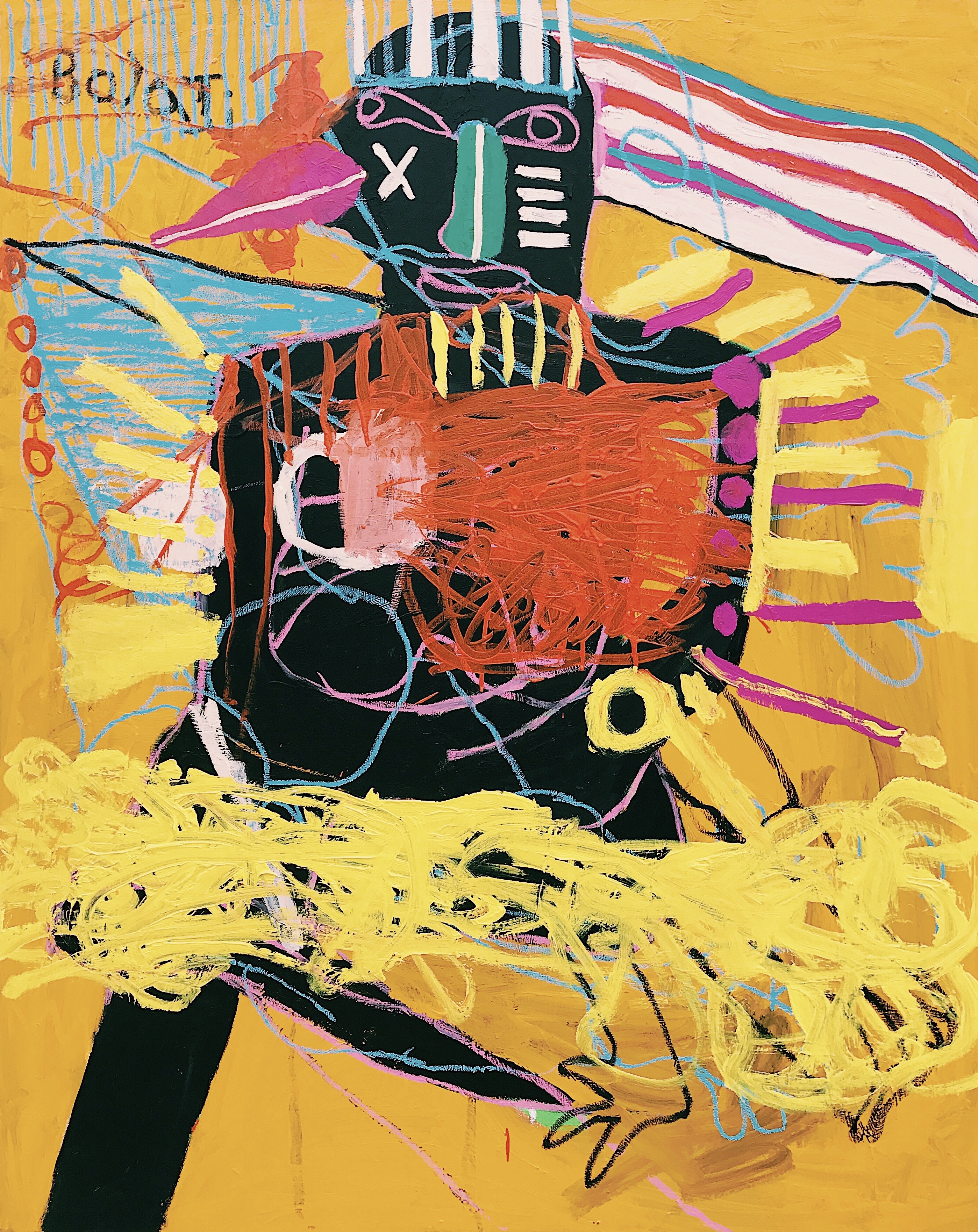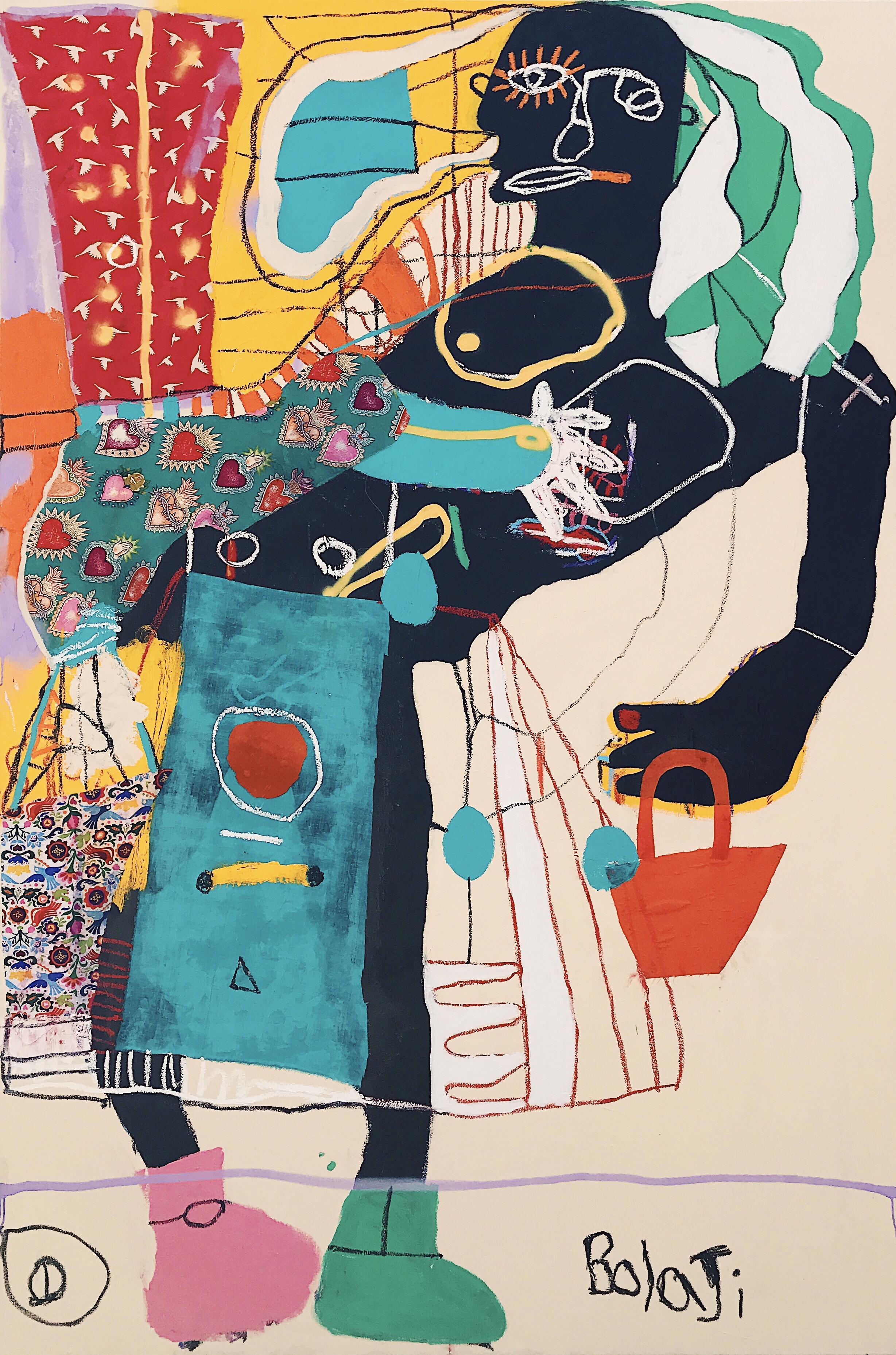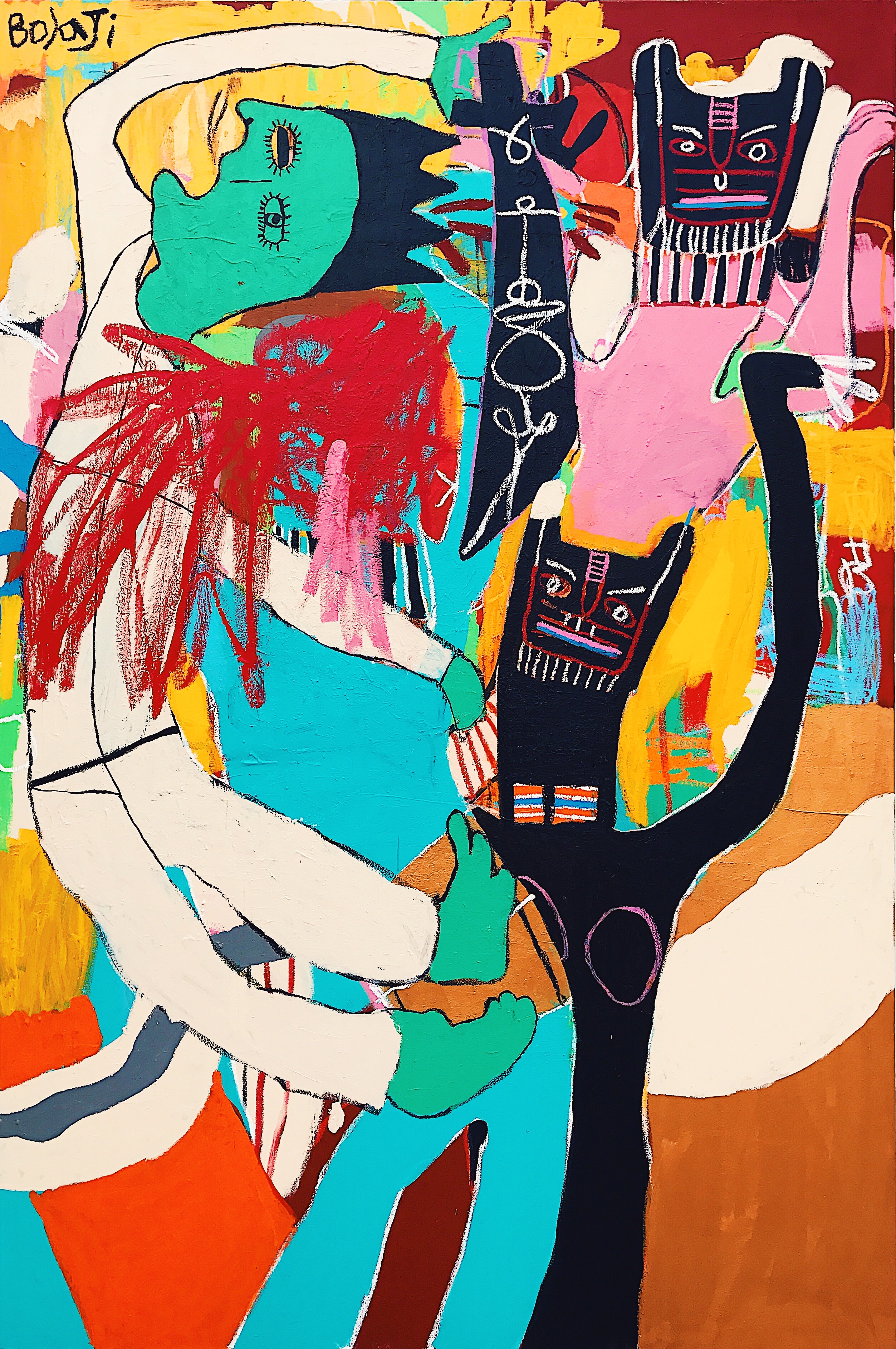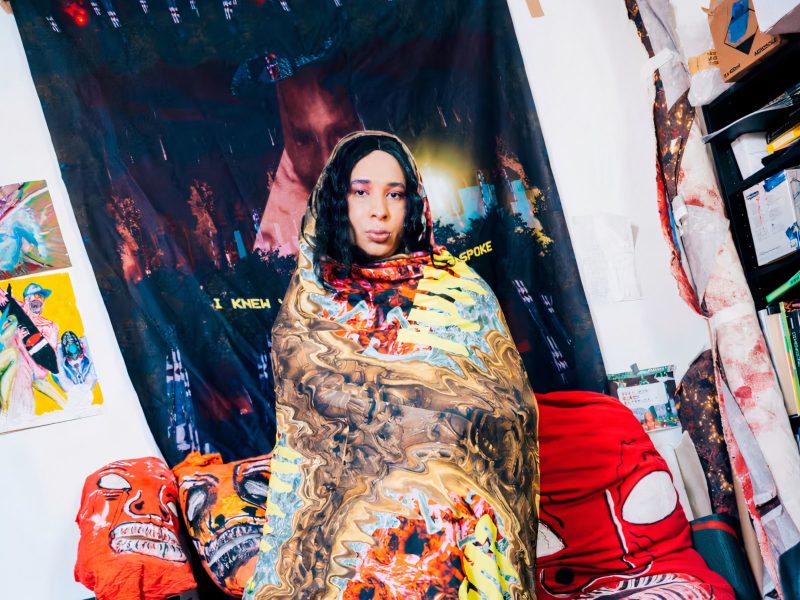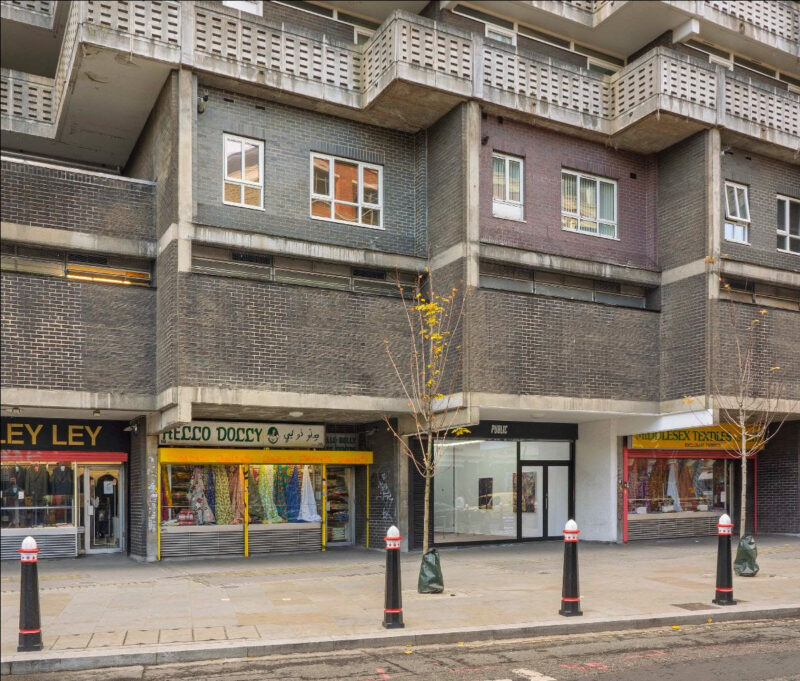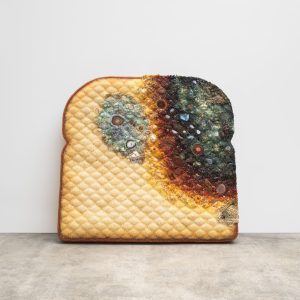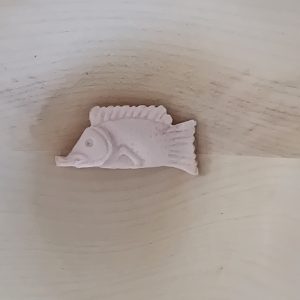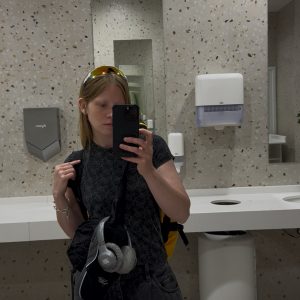Adébayo Bolaji to have a solo show at PUBLIC gallery this September. The powerful new works, created especially for the exhibition, will engage in (and make us reflect on) a psychological, but almost ingrained, research of the self.
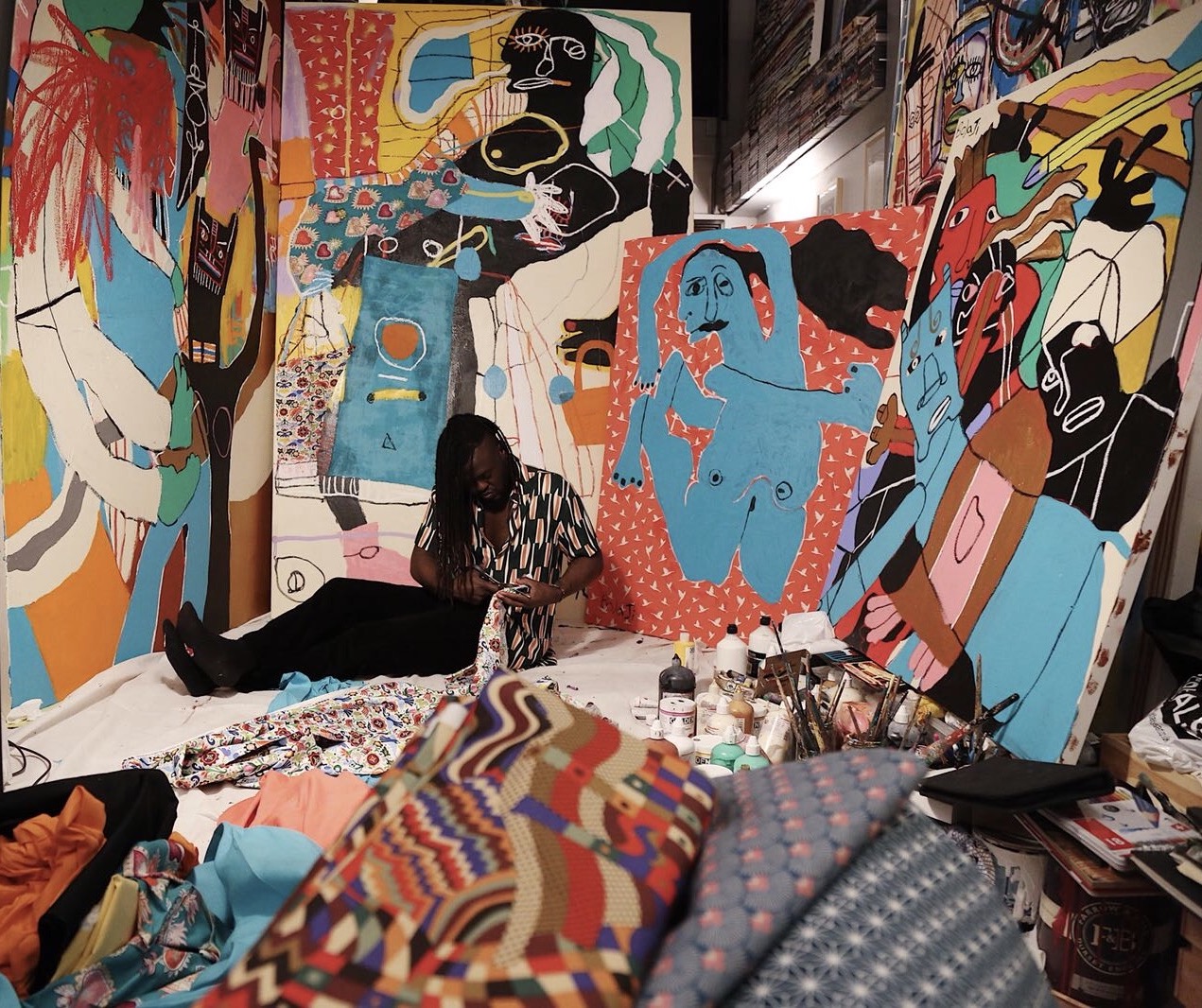
When we try to resolve the question of what art exactly is, it’s hard to come to a stable agreement. Too many factors are at stake, and the answer always risks to be too white, or too general. One thing we can all concur on is that art production is an act of introspection. This influences the artist that, somehow inevitably, pours out a bit of her/himself into the work. It also affects the visitors that, by getting involved with a form of art, start asking questions to themselves and to the world around them.
Sometimes, this introspective process is triggered automatically just by the act of creation. On other occasions, it is something deeper, something rooted in the idea behind the creation itself. To Adébayo Bolaji painting means questioning the outside reality by researching the hidden reality of his deeper self. Through an instinctive process of creation in which colour holds court, the artist looks inward in order to comment on the external world. Possessing an almost prophetic quality his cathartic practice provides a therapeutic function for both artist and viewer.
Rituals of Colour, the solo show presented at PUBLIC gallery showcases a bold new body of work created exclusively for the exhibition. It encompasses a wide spectrum of media that creates an immersive experience. Pasted scraps of Bolaji’s text and drawings will serve as the narrator, guiding the viewer through the space – from a whole wall occupied by one of his largest and most ambitious works to date, to works on found materials, freestanding totemic pieces and Bolaji’s signature canvasses. The journey will culminate in a film exploring Bolaji’s thoughts on his own ‘rituals of colour’.
Bolaji’s starting point are always the concrete objects, facts and emotions he encounters around him. He then turns the sensorial, as well as the tangible, information he gathered in his journey into explorations of the self. The transition between the external stimuli and the inner investigation is immediate and instinctive.
The artist keeps engaging in a simultaneous conversation with himself and the events that happen around. The seemingly rationality of the world out there enters into a fight with the chaos of the unknown hidden inside of the artist. This battle between exterior and interior unleashes a vent of powerful colours. Bolaji canvases are characterized specifically by these rituals of colour that mirror the rituals characterising everyone’s reality. This proximity between the objective facts that we can all feel into the world and the extremely personal way each one of us process them renders Bolaji’s works a sort of psychological therapy. The artist himself considers his style of painting as a form of psychoanalysis.
Rich with references to personal history, as well as cultural notes from his Nigerian heritage and home city, London, Bolaji’s colourful and animated canvases unfold organically from within. His process can be characterised as a kind of liberating play in which his emphasis on following and trusting the line as well as his instinctual choice of colour is fundamental. Sigmund Freud cited play as a means of healing: it allows for the expression and reconciliation of unconscious emotions and anxieties. It is an apt metaphor for Bolaji’s paintings, for play transgresses the barrier between the individual’s inner world and the world outside.
The concept of play is everywhere present in the artist’s works. It has a part not only as a theatrical performance, which is immediate, impulsive, and that merges together fiction and reality, seeing and been seen, actor and acted. Play is also the play of colour, the mixing of emotions, the exchanging of inner and outer self. Play, finally, is visible in the quasi-abstract figures painted by Bolaji; in the Dubuffetian references, the grotesque and charges atmospheres, and the semi-surrealistic genealogies.
The final result, which for its intentional lack of perfection and psychological undertone is as important as the process, looks highly personal. The subject varies, from the seemingly aesthetic to a direct commentary on the state of the human condition. The closer you look at the paintings the more you discover; faces loom from dark hidden corners while almost illegible words of poetry appear beneath layers of bold primary colours. In the current series the artist engages with both ritualistic and mystical imagery; depicting struggles both internal and external between the old and new, these images acting as metaphors for the conflict we all experience whilst establishing our own emotional identities.
The use of the same vibrant language is a constant element narrating a different story within each painting. Visually, the works have layers of bold colours and as the texture thickens the velocity builds up. Colours are placed on top of each other, without being blended, as they come straight from the tube. The conscious choice of acrylic paint, which dries fast, preserves the energy and tempo of the piece.
Bolaji has exhibited internationally in London, New York and Zurich including an Artist Residency with Yinka Shonibare MBE Guest Projects. This exhibition presents a series of new work which explores the shared power of ritual and colour to transform our lives as well as support the deepening of our spiritual and emotional connections.
Rituals of Colour, Adébayo Bolaji, 4th September – 6th October. PUBLIC Gallery, 17 Amhurst Terrace, E8 2BT

